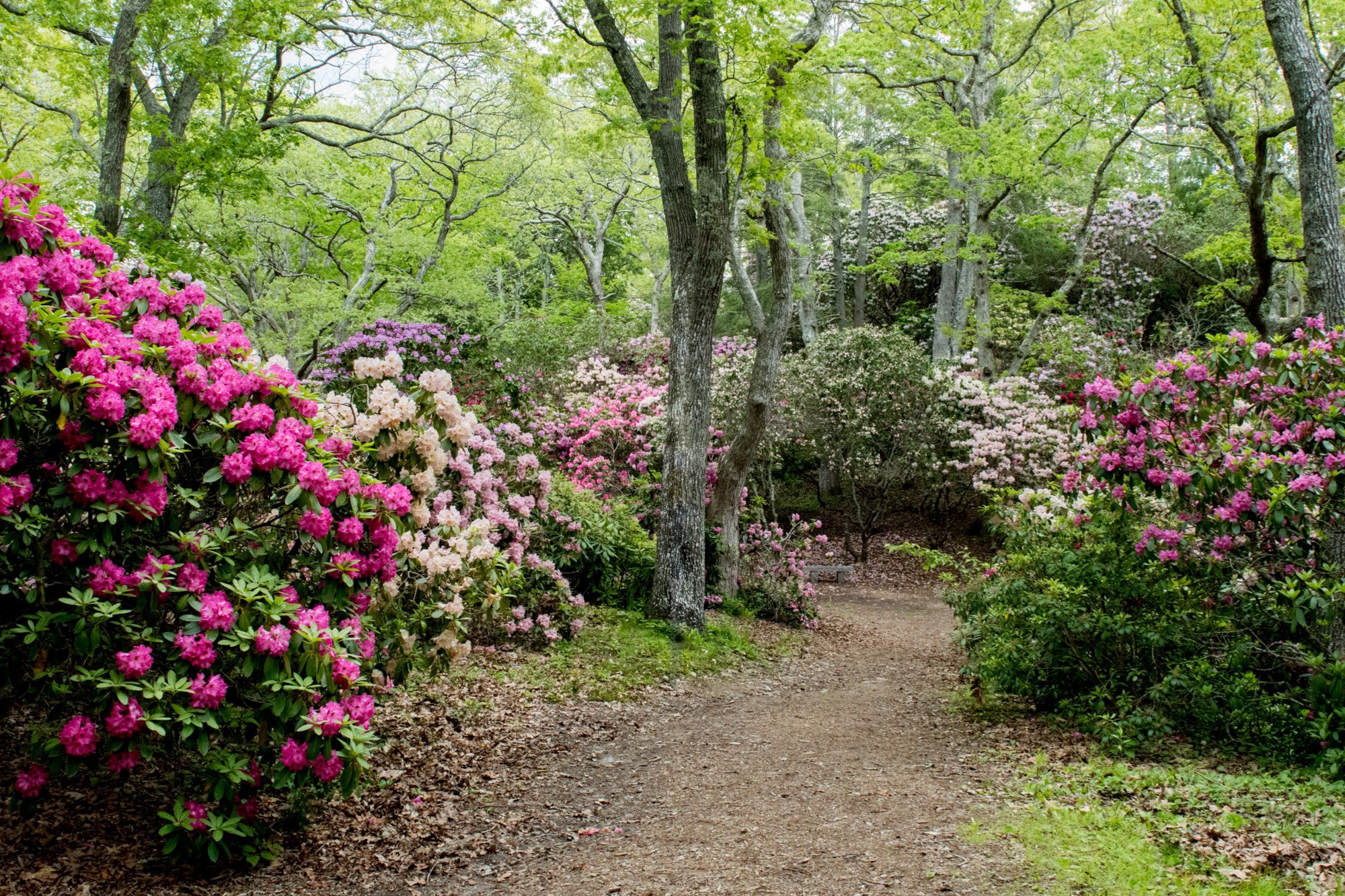As New Englanders, we are well-versed in the constant change of the seasons. Living in this part of the planet, we are treated to a wide range of weather, and we have the opportunity to see how one season can affect another. For example, we know that a dry summer can lead to a less vibrant fall and that an extended snowy season can delay spring planting. And this past spring’s weather has impacted traditional aspects of summer. During March, we had some very cold weather, which affected the summer blooms of what is typically viewed as the signature Cape Cod flower – Hydrangea macrophylla. This variety, found all around the grounds, but particularly in the Cape Cod Hydrangea Society Display Garden here at Heritage, is native to maritime Japan and Asian coastlines. It is the least cold-hardy of all the commercially available species and 2022 and 2023 have proved too harsh on these darling blossoms. Mal Condon, our Curator of Hydrangeas, breaks down how and why this season looks different.
Where Have All the Flowers Gone – Again
An update on the beloved Hydrangea macrophylla
By: Mal Condon, Curator of Hydrangeas
The summer of 2021 brought us the best Hydrangea macrophylla blooming on the Cape in at least 15 years. This much-loved species was magnificent virtually everywhere – and especially so at Heritage – as we compared the magnificence of last July against the poor years from 2014 through 2019. Sadly, we do know that H. macrophylla is the least cold-hardy species of the genus which means it is easily and negatively impacted by cold winter/spring temperatures and drying winds. It also sets flower buds in the autumn, meaning those buds must endure the harshness of winter and spring before becoming the cherished blossoms of the following summer.
Here on the Upper Cape, the winter weather pattern of 2022 very closely paralleled that of 2021 with average daytime temperatures largely tracking the freezing line – a few days below 32˚F followed by an equal period of high 30s to low 40s. Nighttime temps were 5 to 10 degrees colder. Overall, we enjoyed Zone 8 winters, with a lowest morning temperature of 11˚F at Heritage. Absent too were the sudden and major temperature swings of 20 to 30 degrees in a single day. Just about perfect! Like 2021, March 2022 weather progressed nicely; daylight was increasing and so were the average temperatures, with several daytime highs reaching into the low 50s and night temperatures staying above freezing. Such was the case as we welcomed Spring on March 21. All good!
Unfortunately, along with setting their flower buds in the fall, H. macrophyllas also have another characteristic that can be undesirable. They are very anxious to get growing – just a few 50˚F days and the winter surviving buds show life, begin to swell, and the outermost tissue starts to unfurl. Consequently, a surprise temperature swing can have a devastating effect on these opening buds.
And so, just into the first week of Spring – the night of March 26/27 to be exact – just such a severe cold snap occurred. In the coldest regions of the Cape, the temperature dipped below freezing at about 11 pm and progressively dropped to a low of 20˚F at Heritage by 7 am. The intensity and duration of this freeze was major, effectively freezing nearly all vital plant stem material on the most exposed and vulnerable cultivars of the H. macrophylla species.
Had this freeze occurred a month sooner, it would have been a non-issue, as the plants would have been totally dormant. This is the huge negative effect of late winter/early spring freezes. And – as we have shared so often – it’s totally and only an H. macrophylla thing. Here are some photos to further amplify the effects of this event.

View in the Dsplay Garden – Beds F (upper group) and D (the horizontal row). All of these plants are H. macrophylla of the older ‘legacy’ group, which is typically the least cold-hardy. Note the almost total failure of last year’s old growth. The vibrant green foliage growth is almost totally new this year.

In the Test Garden, just inside the second upper entrance. ‘Twist N Shout’ and ‘Endless Summer the Original’ show substantial freeze damage. And these cultivars are members of Bailey Nurseries’ infamous ‘Endless Summer Collection’. Despite the obvious dead stems, these plants are good rebloomers and some flowers will develop on the new growth (virtually all the green growth is ‘new’, very little ‘old’ growth survived the freeze).

Freeze damage occurred in many areas at Heritage. This photo shows ‘Twist N Shout’ in front of the wall around the Fraser Terrace at the Auto Gallery entrance. Again it’s ‘Twist-N-Shout’ – normally a strong variety in terms of cold-hardiness. Fortunately, it is a potent rebloomer and some flowers will develop on new growth over the summer months.

As we know well, the species H. macrophylla was punished the most, but even the hardier H. serratas – close cousins to the H. macrophyllas – were knocked back. Fortunately, a fair number of stems did survive in their lower sections and the associated flower buds will provide some decent blooming. Be sure to examine the Serrata Bed in the Display Garden when you visit.
Keep in mind that there is some ‘lemonade’ to this story. Do pay attention to the varieties that do show some flowers – and jot done their names. These are the ones you especially want to add to your garden!
Best in Gardening! Mal the Curator of Hydrangeas








